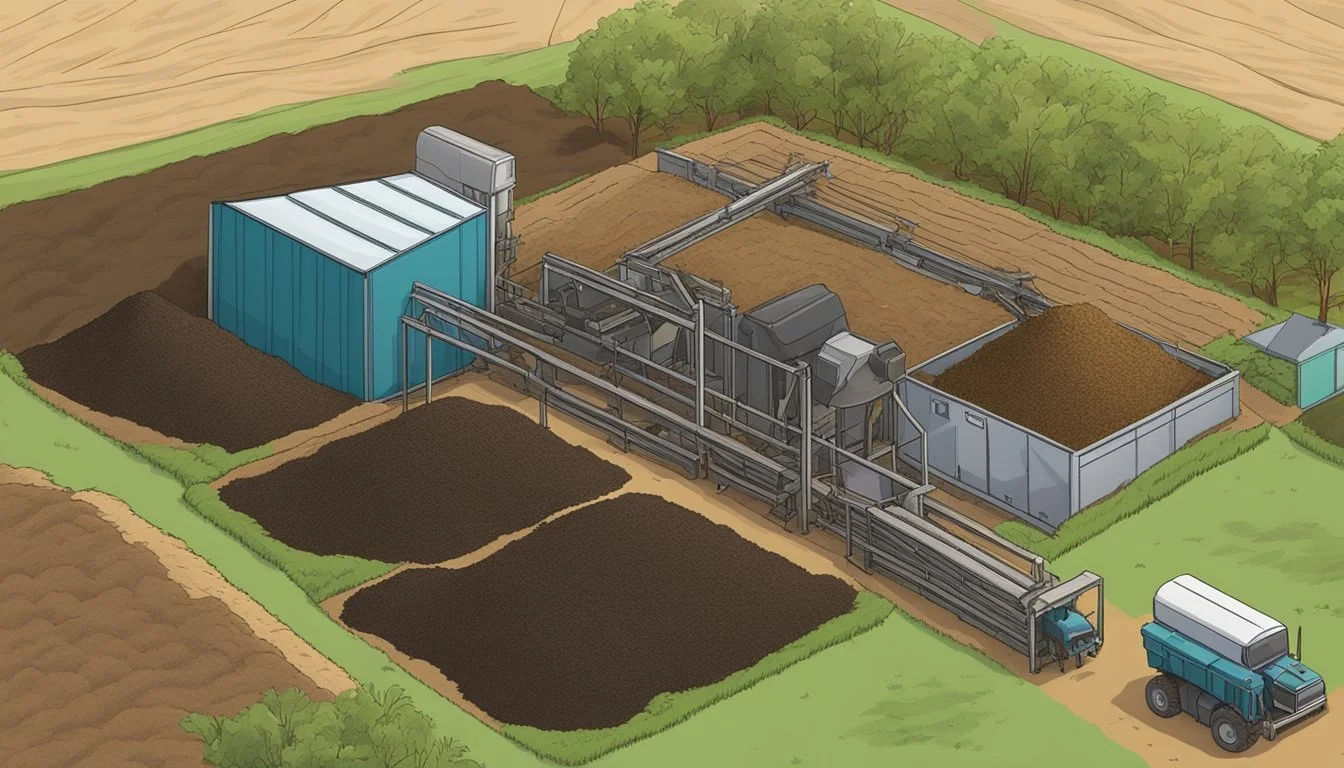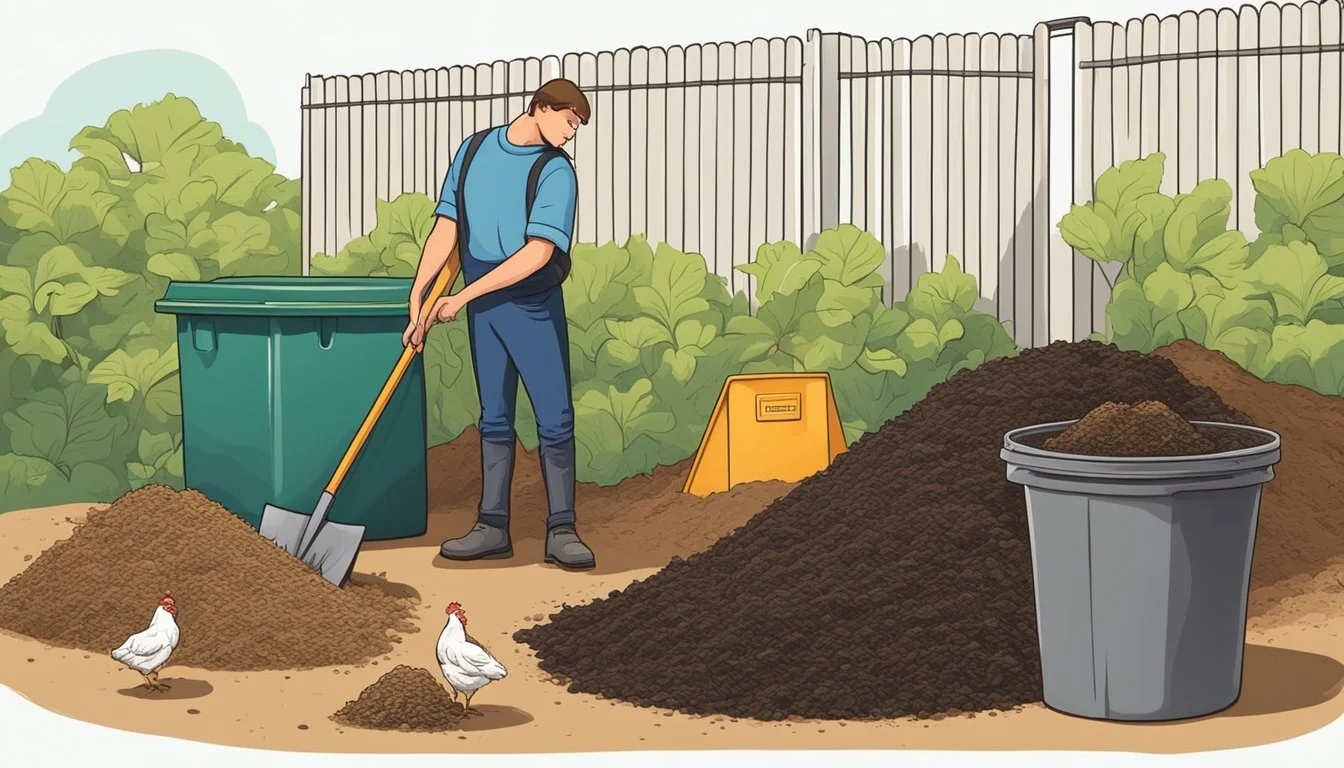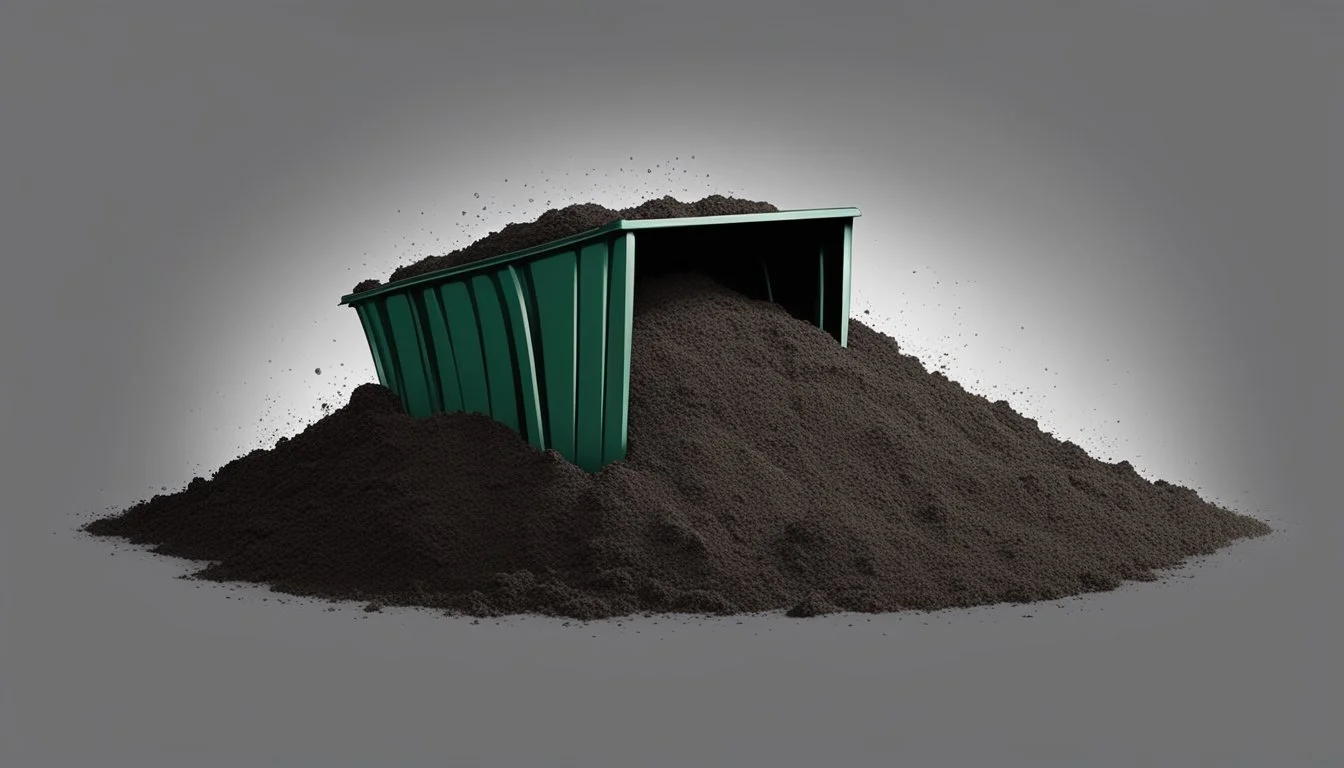Can I Compost Chicken Manure and How to Do It Effectively
Composting is a process that transforms organic waste into a nutrient-rich soil amendment, and chicken manure can be an excellent addition to a compost pile due to its high nitrogen content. While raw chicken manure is too strong to be used directly on plants, as it can burn them and potentially harbor pathogens, composting this manure makes it safe and beneficial for garden use. The transformation of chicken manure into compost involves careful management of the compost pile to maintain the proper balance of carbon, nitrogen, air, and water.
The key to successful composting of chicken manure lies in achieving a balanced ratio of carbon-rich "browns" and nitrogen-rich "greens." Chicken manure is considered a "green" material in composting terms, despite its color, because of its nitrogen content. To counterbalance this, carbon-rich materials such as dry leaves, straw, or wood shavings are usually added. They have detailed instructions on how to compost chicken manure to ensure a desirable carbon to nitrogen ratio, typically at least 2:1 in favor of browns, to promote effective composting and minimize odors.
Gardeners interested in composting chicken manure must also pay attention to turning the compost pile regularly to aerate it and speed up the decomposition process. Regular mixing ensures even distribution of moisture and heat throughout the pile, which is critical for effective breakdown of materials and for the compost to reach a temperature that kills off potential pathogens. By adhering to these methods, gardeners can convert chicken manure into a valuable ingredient that improves soil structure, enhances moisture retention, and provides essential nutrients to plants.
Benefits of Chicken Manure in Composting
Utilizing chicken manure in composting not only recycles waste but also adds vital nutrients to the soil, thereby enhancing the garden's productivity.
Rich Nutrient Source
Chicken manure compost is an excellent source of nitrogen, phosphorus, and potassium—key nutrients required for healthy plant development. These nutrients support various plant functions, including root growth and flowering, which are essential for a fruitful garden.
Improving Soil Structure
The addition of chicken manure compost to the soil introduces organic matter, which improves soil structure. This enrichment allows for better aeration and water retention, facilitating robust root systems and healthier plants.
Enhancing Plant Growth
Incorporating composted chicken manure into the garden promotes vigorous plant growth. Its high nutrient content acts as a natural fertilizer for vegetables and other plants, reducing the need for chemical alternatives and supporting sustainable organic gardening practices.
Pre-Composting Considerations
Before starting to compost chicken manure, it's imperative to understand the precautions and parameters that ensure a safe and effective process. Attention must be paid to mitigating pathogen risks, controlling compost conditions, timing the composting process, and planning for adequate space.
Safety and Pathogen Concerns
Fresh chicken manure can harbor dangerous pathogens like Salmonella and E. coli. It's vital to wear gloves and take safety precautions to avoid direct contact. Proper composting kills these pathogens by achieving a high enough temperature within the pile, maintained through regular monitoring.
Regulating Compost Parameters
An optimal balance of nitrogen (from chicken manure) and carbon (from materials like leaves or straw) facilitates aerobic decomposition. The carbon-to-nitrogen ratio (C) should be maintained around 20-30:1 for effective composting. Additionally, appropriate moisture, oxygen, and temperature levels are necessary for microbial activity to break down the manure without emitting foul odors.
Choosing the Right Season
Composting chicken manure can be done year-round, but fall and spring are the most favorable seasons. In fall, abundant dry leaves provide a good carbon source, while spring temperatures can help maintain the necessary heat within the compost pile.
Adequate Space and Sizing
The size of the compost setup should correspond to the amount of manure and additional organic matter. Typically, a cubic yard is recommended as the minimum size to ensure adequate heat retention and proper aeration. Water and air supply must be sufficient within the structure, which is often a designated area or a contained bin.
Building Your Composting System
To effectively compost chicken manure, building a proper composting system is crucial. This includes selecting the right composting method, finding or building the appropriate containers, and layering the compost materials to facilitate decomposition.
Selecting a Composting Method
There are two primary methods of composting: hot composting and cold composting. Hot composting is a faster process that can produce compost in one to three months and requires layers of green and brown materials to achieve a higher temperature, which in turn accelerates the activity of microorganisms. Cold composting is a slower process, taking anywhere from six months to a year, but it is less labor-intensive.
Constructing or Purchasing Containers
For the creation of a compost system, one can either construct or purchase a compost bin or tumbler. The chosen container needs to provide sufficient space for the compost mix and should allow for adequate aeration and moisture retention. A tumbler is suitable for hot composting as it makes turning the compost an easier task.
Tumbler: Efficient for hot composting, allowing for easy turning and faster decomposition.
Compost Bin: Traditional option, can be used for either hot or cold composting.
Layering Your Compost Materials
Layering your compost pile is essential for a successful composting system. Start with a layer of brown material, such as dry leaves, straw, or shredded paper, which are carbon sources. Add a layer of nitrogen-rich kitchen scraps or bedding materials. Aim for a carbon to nitrogen ratio of 30:1 for optimal composting. The layers encourage aerobic decomposition and provide a habitable environment for the necessary microorganisms to thrive.
First Layer: Brown materials (carbon-rich)
Second Layer: Green materials (nitrogen-rich)
Additional Layers: Alternate between brown and green materials, maintaining the carbon to nitrogen ratio.
Maintaining Your Compost
Successful composting of chicken manure involves careful maintenance to promote the decomposition process while managing odors and deterring pests. It is crucial to monitor the balance of moisture, air, and temperature to ensure the thriving of beneficial bacteria that break down organic matter into nutrient-rich soil.
Monitoring Compost Conditions
To guarantee optimal composting conditions, one should regularly check the compost's temperature and moisture levels. A compost thermometer is a useful tool for ensuring that the internal temperature is between 130-150°F, the range where bacteria are most efficient and weed seeds are likely to be killed. The compost should feel like a wrung-out sponge, indicating proper moisture content.
Managing Odors and Pests
An earthy smell is a sign of a well-maintained compost pile, while the presence of ammonia or other foul odors may suggest an imbalance. To prevent these odors, maintaining the right carbon-to-nitrogen ratio is essential, and adding carbon-rich materials can help. Secure covering or fencing can help in deterring pests.
Aeration and Turning
Aeration is key to supplying oxygen to the compost, which the bacteria require to break down organic matter effectively. Turn the compost regularly to introduce air and distribute moisture evenly. This practice helps the decomposition process and prevents the compost from becoming overly compacted.
Determining Compost Maturity
Compost is mature when it has a dark, crumbly texture and an earthy smell. To test if the compost is finished, one can perform a cure by letting the compost sit for a few more weeks after it appears ready. Mature compost should no longer heat up after turning and should not have any discernible food or manure pieces.
Using Composted Chicken Manure
Composted chicken manure is a potent soil amendment that provides a rich nutrient profile beneficial for plant growth. Utilization of this organic matter supports healthy garden development.
As a Soil Amendment
Composted chicken manure can be incorporated into the garden soil to improve its structure and fertility. Rich in nitrogen, phosphorus, and potassium (NPK), this soil amendment enhances the capacity of the soil to retain moisture and nutrients, creating an optimal growing environment for plants. When preparing garden beds, it's recommended to mix in the composted material with the native soil, typically at a ratio of 1:3, to avoid nutrient overload.
For Fertilizing Plants
Acting as a natural fertilizer, composted chicken manure supplies a spectrum of essential nutrients that promote vigorous plant and vegetable growth. Before planting, gardeners should mix the compost into the soil around the base of the plants. It's also effective as a top-dressing fertilizer; by spreading a thin layer around the plants during the growing season, it provides a slow-release feed.
Table: Typical Application Rates for Composted Chicken Manure
Plant Type: Vegetables
Application Rate: 3-6 lbs per 100 square feet
Plant Type: Ornamentals
Application Rate: 2-4 lbs per 100 square feet
Plant Type: Established Trees
Application Rate: 6-8 lbs per inch of trunk diameter
Safety Measures Before Application
Applying composted chicken manure safely is crucial to avoid the risk of pathogens. Safety precautions include wearing gloves during handling and ensuring the compost has properly aged. A compost temperature of 130-150°F for at least 3 days in succession helps eliminate harmful organisms. The compost should be dark, crumbly, and have an earthy smell before it's applied to the garden. Additionally, it's important to avoid using fresh manure as a fertilizer, especially on edible plants, as it can pose health risks due to its potential pathogen content.
Environmental Impact and Sustainability
Composting chicken manure is a responsible method of managing waste from backyard chickens and can have significant positive impacts on environmental sustainability. By transforming manure into a valuable resource for the garden, it becomes part of a closed-loop system that mitigates landfill accumulation and enhances soil quality.
Reducing Waste and Recycling
Composting chicken manure helps reduce waste by recycling nutrients back into the soil. When chicken manure is added to the compost pile, it breaks down with other organic matter such as yard waste and food scraps. This process not only diminishes the volume of waste sent to landfills but also recycles the manure into a nutrient-rich, organic fertilizer, preserving resources and decreasing reliance on synthetic fertilizers.
Supporting Organic Gardening
Chicken manure compost is highly valued in organic gardening due to its high nutrient content, which includes essential elements such as nitrogen, phosphorus, and potassium. When applied to gardens and fields, composted manure improves soil structure, enhances water retention, and fosters microbial activity. This creates an eco-friendly garden that can sustain plants with reduced chemical inputs, contributing to a more holistic and natural approach to plant cultivation.
Promoting Sustainable Practices
Composting chicken manure aligns with sustainable gardening practices by benefiting the environment in multiple ways. It not only prevents the accumulation of manure in areas that could contaminate groundwater but also enriches the soil, promoting healthy plant growth. By utilizing chicken manure from a backyard coop or homestead, there is a decrease in the carbon footprint associated with transporting and producing commercial fertilizers. This local loop of nutrient recycling underscores the value of sustainable practices in maintaining a balanced ecosystem.




